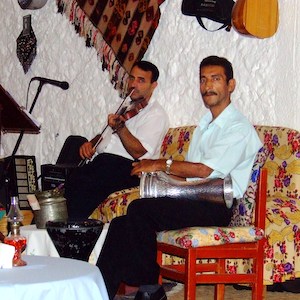Uysal-Walker Archive of Turkish Oral Narrative
This website is an extremely valuable resource, providing thousands of Turkish folktales collected through oral interviews and translated into English and hundreds of additional primary and secondary sources related to Turkish folklore and folkways. The archive is the result of interviews with several hundred Turks over more than 30 years. By collecting and translating these folktales, the three interviewers preserved many oral traditions that may have otherwise been lost in the dynamism of a changing, 21st-century Turkey.
The site is divided into eight subsections, each with many valuable texts pertaining to Turkish folk ways: “Guides,” “Narratives,” “Music,” “Stories,” “Epics,” “Images,” “Folklore,” and a section about the methods employed by the researchers. “Guides” features more than 40 topics, ranging from original Turkish publications of folktales to secondary accounts of the historical value of such literature in Turkey. Most of these documents are in PDF format, although there are two series of audio files (MP3) of oral narratives, from the 1950s and 1980s. Files in this section are in Turkish, English, and Russian.
“Narratives” is perhaps the most valuable, as it contains 2,210 PDF files of translated oral narratives, collected by researchers from the 1960s to the 1990s and translated by native Turkish speaking students. Each file provides information regarding the name and age of the original narrator, as well as the place and date of the interview.
“Music” contains more than 100 audio files (MP3) of Turkish folk music, as well as lyric sheets for many songs. “Stories” (designated only in the Turkish, “Oykuler”) contains nearly 100 stories and poems, as well as three audio files of readings. “Epics” offers 19 epics, available as dozens of downloadable PDF files, as well as 13 MP3 files of performances. Most of these files are in original Turkish only.
“Images” is home to 17 pages of image files of Turkish landmarks, as well as video, MP3, and PDF files about the role of folktales in Turkish cultural history. “Folklore” is a melange of many features, including nearly 100 PDF files about Karagoz traditions, articles and bibliographies about plays, games, folklore, pre-Islamic Turkish religions, and other aspects of folk traditions. These sources are in English and/or Turkish. Finally, there is a page of about 50 “Links”, directing users toward various other sites of interest for those studying Turkish culture, anthropology, and folklore.
Each of the digitized files is available either as a PDF text file, an MP3 audio file, or a video file. The curators have provided clear directions about downloading files, as well as information about the various software programs available for viewing such media. Having the materials in PDF format allows readers to see the original as they exist in the archive—definitely a benefit for scholars.
The major flaw of this site is that it is quite difficult to navigate. The organization is unclear for visitors, with key introductory information hidden from the home page. The bilingual aspect of the site is also confusing, because some information is only provided in English while other details are only provided in Turkish. The result is the likely chance that users will miss important files simply because they cannot navigate the site. It would be useful if the curators wrote descriptive introductions for each of the subsections of the site, explaining exactly what visitors can expect to find in the collection. Such an addition would make this a more effective teaching tool for use with students, as well as an invaluable location for advanced scholarly exploration. Despite this significant problem, however, the digital access to these materials is something that will have students and scholars of Turkish folklore rejoicing.
World history teachers may find this site useful for planning assignments about Turkish folklore. For instance, students could read stories from the more than 2,000 translated narratives, as well as listen to the MP3s to get a sense of performances. They may also enjoy learning about the Karagoz puppet tradition; indeed, students could use the files about Karagoz to plan their own performances, and thus learn about a popular representation of Ottoman popular culture.
